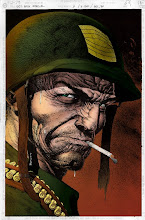
Knievel's death was confirmed by his granddaughter, Krysten Knievel. He had been in failing health for years, suffering from diabetes and pulmonary fibrosis, an incurable condition that scarred his lungs.
Knievel had undergone a liver transplant in 1999 after nearly dying of hepatitis C, likely contracted through a blood transfusion after one of his bone-shattering spills.
Longtime friend and promoter Billy Rundel said Knievel had trouble breathing at his
"It's been coming for years, but you just don't expect it. Superman just doesn't die, right?" Rundel said.
Immortalized in the
Though Knievel dropped off the pop culture radar in the '80s, the image of the high-flying motorcyclist clad in patriotic, star-studded colors was never erased from public consciousness. He always had fans and enjoyed a resurgence in popularity in recent years.
I enjoyed watching Evel Knievel perform his death defying stunts during TV specials in the 70s. My buddies and I would even tool around on our bicycles pretending we were a gang of stunt bike riders (my short lived gig was crashing my bike into my family's backyard fence). My buddies and I even had our own Evel Knievel action figures (they weren't dolls, you know) with wind-up motorcycles and had them reenact his stunts. Knievel toys accounted for more than $300 million in sales in the 1970s and 80s. Of course, my Evel Knievel action figure "retired" way before the real Daredevil retired.
"No king or prince has lived a better life," he said in a May 2006 interview with The Associated Press. "You're looking at a guy who's really done it all. And there are things I wish I had done better, not only for me but for the ones I loved."
R.I.P., King of the Daredevils.































.svg.png)





No comments:
Post a Comment